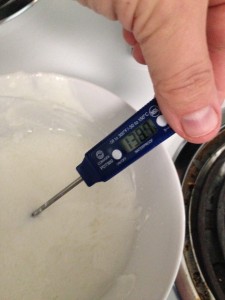I’m not sure who fears mayonnaise, but Chef Simon Hopkinson tells NPR’s The Salt that folks do, and they shouldn’t if they follow his kitchen hacks.
“mayonnaise … is something that is such a pleasure to make, but people are often frightened of it and it’s one of the most delicious things.”
Hopkinson has two secrets for making mayonnaise at home. The first one is to spare your arms and use an electric whisk. The second secret is use a tall, narrow beaker, or a small pitcher, not a wide bowl. That way everything stays in one place and doesn’t splatter.
You start with two egg yolks, a blob of dijon mustard, a squeeze of lemon, salt and white pepper.
Throw that into the beaker and whisk it around a bit. Then comes the oil – he uses a mix of olive oil and peanut oil.
One final touch: a splash of boiling water to smooth the taste.
I’ve made dishes that call for raw eggs stuff like mayo, meringue and caesar salad dressing. The third tip Hopkinson misses is to use in-shell pasteurized eggs to reduce Salmonella Enteriditis risks; a pathogen worth fearing. There have been lots of raw egg dish-linked Salmonella outbreaks.
The boiling water won’t raise the temperature high enough to kill any pathogens. I just did a bit of a home science experiment. Just added a splash of boiling water, which I defined as a tablespoon, to half a cup of room temperature yogurt, my mayonnaise surrogate, and the temperature went up 6 degrees (77F to 83F). It took 3/8 of a cup of boiling water to get the mixture above 135F and resulted in a milky consistency.
